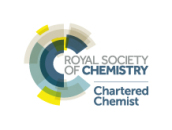New Routes to Old Molecules (updated 19/12/2017)
Some of the recent developments in Chemistry that may impact on Lubricants additives have focused on more sustainable routes to existing molecules. These have arisen due to the use of new raw materials, or new (usually less environmentally harmful) manufacturing processes.
Examples such as Neste's NeXBTL route from natural fats to diesel and Elevance's routes from a similar starting material to a functionalised PAO have already been mentioned in the top level of the Blogs, but examples exist of routes from natural products to intermediates en route to the additives that we are familar with. While commercialisation may be some way off, these intermediates could be incorporated into some of the current high volume lubricants additives without the addcos changing anything.
Bio-isobutylene
The dispersant "tail" is often derived from isobutylene (also known as isobutene or 2-methylpropene) and bio-based routes to this molecule also exist (see here, more references to come). The driver towards ready availability of bio-isobutylene may come from one of the larger markets.
- the fuel enhancers MTBE and iso-octane
- methylmethacrylate, used to make "Plexiglass" or "Perspex" transparent engineering plastics
- synthetic rubbers
- adhesives and sealants
- both viscosity modifiers and PPDs for Lubricants.
Note that MTBE consumption is in decline, but iso-octane is a majority component of aviation gasoline (Avgas), used in piston engine aeroplanes. With the long-awaited removal of lead from Avgas nearing reality (see articles from the FAA, Swift Fuels and Shell), the manufacture of iso-octane from bio-isobutylene could give the leisure aviation market a gigantic leap from leaded fuel to low greenhouse gas fuel in a very short period. I wonder if the offer has marketing traction?
At some time in the future there will be a blog on isobutylene, butene, their conversion into polybutenes (PBs) and polyisobutylenes (PIBs) and why some in lubes should be careful about the distinction between PBs and PIBs. In the mean time, here's a link to an article in Lubes'n'Greases EMEA with some of that discussion.
Bio-butadiene
Infineum may also have an interest in bio-butadiene, as this is a raw material for certain Infineum SV branded Viscosity Modifiers. Several players have entered this field, for example, including INVISTA/LanzaTech, Genomatica/Braskem, Versalis/Genomatica).
Bio-Succinic Acid. Probably not relevant, but then again....
Bio-Succinic Acid was one of the US Department of Energy's "Top 12 Top Value Added Chemicals from Biomass" in a 2004 report.
At first sight, new routes to Succinic Acid (review including BioAmber, Myriant) may be of interest to those addcos that use maleic anhydride (which is trivially converted into succinic acid for use in other processes), as the linking group in their dispersants. Not because of any opportunity to introduce a renewable component into their processes, but rather because some of the end-uses of maleic anhydride could disappear. Don't be fooled by references to polybutylene succinate by these companies. This is poly(isobutylene succinate), rather than (polyisobutylene) succinate. The latter could be interpreted as meaning a class of molecules, which could be reacted with amines to manufacture many dispersants.
However, Oleon appears to be taking advantage of the fact that succinic acid is a diacid. A five-year agreement in 2014 gives them exclusive access to BioAmber's bio-succinic acid in what appears to be a move towards a series of 100% renewable esters starting from bio-succinic acid and renewable alcohols. See the BioAmber press release here.
Elevance's bio-derived diacids have much longer chains than the Oleon/BioAmber analogues and are targeted at the polymers market.



